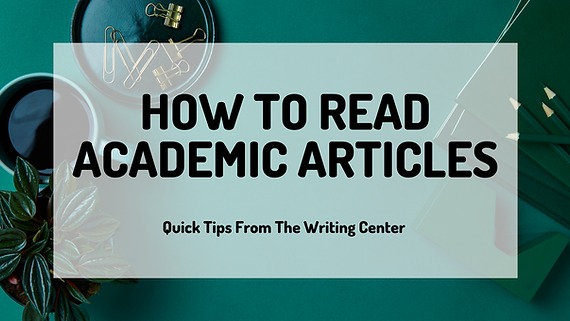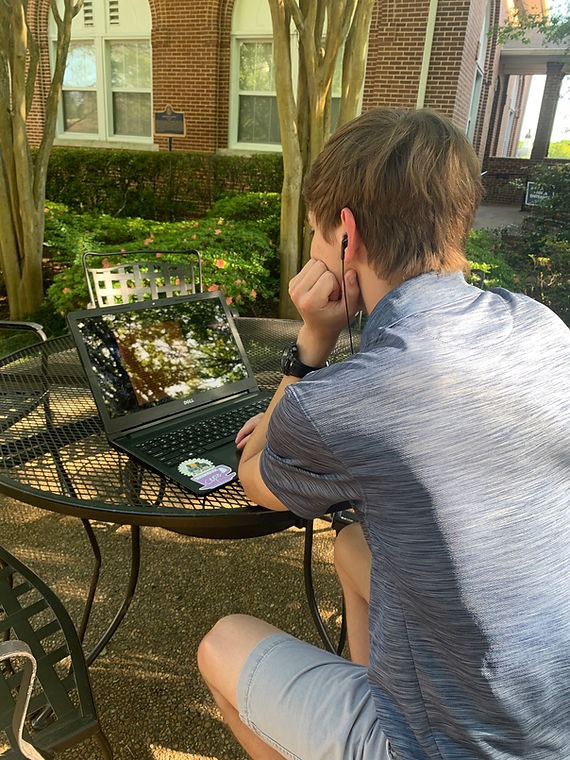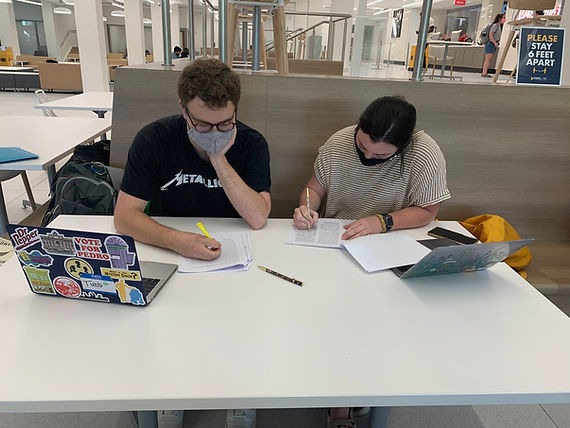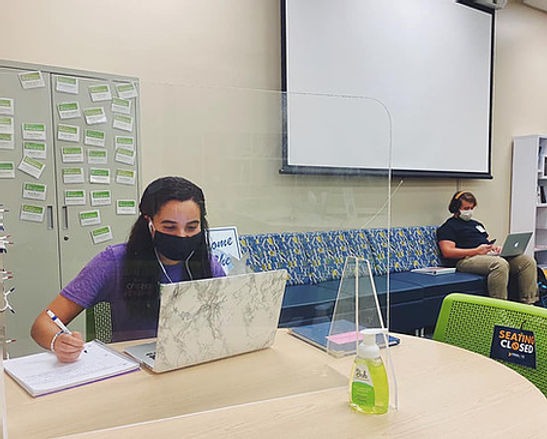How To Read Academic Articles
by Matthew Drew

Welcome back Writing Center family! It’s Annie again! We’re only a few weeks away from the end of the semester. Isn’t that so crazy? While we’re starting to see the light at the end of the tunnel, most of us still have many assignments we need to complete before we end the semester. I’ve heard a lot of students talk about how their final assignments for the semester involve reading academic articles, discussing the articles in class, and writing papers about the articles. For most, these academic articles seem pretty daunting. How are we supposed to read a long article with so much scholarly language and write about these articles? So, I invited Writing Center tutor Matt Drew to provide some advice on reading academic articles. As a English Writing and History double major, Matt has read many academic articles during college and has many helpful tips to offer!


Writing Center Tutor Matt Drew
Your first time reading an academic article is a milestone in your college career. My personal experience, however, was less than ideal. During my first semester at MC, one of my professors assigned a scholarly article for next class’s reading. After class, I downloaded the article, printed it, began reading, and was quickly overwhelmed. The article’s length was the first problem. How did my professor expect me to comprehend and recall over thirty pages of information on one obscure topic? To make matters worse, the author used such lengthy, technical jargon that I was convinced he was making words up. The article’s content, however, was the final straw. Although I don’t even remember the article’s topic, I remember that it wasn’t a particularly thrilling one. Instead of reading the article and actually learning, I closed my laptop out of frustration and avoided looking at the paper until the very last minute, and I struggled in class because of it.
Scholarly articles are the language of academia, and for college students, these articles are unavoidable. The faster you make academic articles your friends rather than your enemies, the faster you can make these articles work for you. If you’ve ever found yourself in a similar situation to freshman-year me, here are three major tips to help you tackle these articles rather than becoming frustrated and overwhelmed!
1. Prepare before reading!
When reading scholarly writing, jumping straight into an article is not always the best strategy. Unlike an undergraduate student reading one or two scholarly papers for a class, scholars and professors write articles in the context of the topic’s current state of research. Unfortunately, most academic authors assume that their readers are familiar with the topic’s surrounding scholarship, which is why scholarly articles often seem inaccessible to undergraduate students. However, conducting some preparatory research into the article’s who, what, and why will provide you with some essential background information. Before reading an academic article, write down some questions about the author and their article’s content. By answering these questions, you should be able to get a grasp on the scholarly context before you begin reading!
Before you begin reading, do some preliminary research!
Here are some questions to help you gain background info about a scholarly article:
Who?
-
Who is the author of this article?
-
Does the author currently teach at a university, and if so, what classes?
-
Have they published any other articles or books? If so, did these books cover the same topic as the current article?
What?
-
What is the subject of this article?
-
What quick background information can you find for this subject?
-
Does the author reference any significant previous scholarship on their subject?
Why?
-
Why do you think the author wrote this article?
-
Scholars often write articles when they believe there is a gap in the topic’s research. What gap in research is this author trying to fill?
Once you have compiled some background information on the scholarly article, you should feel a little more confident and ready to begin reading!
2. Fully engage with the article!
Scholarly articles require more engagement from their readers than other literature, so be prepared to commit your full attention as you read. Set aside some time and space free from distractions, and if possible, try to read through the whole article in a single, uninterrupted sitting. Personally, I enjoy throwing on my headphones, playing some lo-fi instrumental music, and reading outside. No matter what set-up you prefer, be prepared to spend some time with the text!


When you begin reading, fully engage with your writing!
As you read, mark up the article! If you have a printed copy, use a colored pen to contrast against the black text as you write. Underlining, circling, highlighting, and adding notes in the margin will keep you engaged with the text and increase your comprehension of the thesis and main points. If you don’t have a printed copy of the article, there are several free tools available for marking up PDFs. Adobe Acrobat Reader is my personal favorite since you can add comments through digital sticky notes! This annotating might seem time-consuming at first, but with practice and repetition, you’ll develop your own annotation style which you can use for any article throughout college!
3. Focus on the “big picture” ideas!
As you mark up your copy, try to focus on the article’s “big picture” ideas. Although specific details or examples are interesting, the author’s overall argument (or “thesis”) is what drives an academic article. When you begin reading the article, try to find and underline one or two sentences that best capture the author’s argument. As you progress through the paper, read with this underlined thesis in mind. If the author introduces a new point or spends multiple paragraphs on a single detail, think about how this information relates to their thesis.


As you read and mark up your article, focus on the big picture of the article!
Here are some questions to help you read with a “thesis-focused” perspective:
-
How does this point relate to the author’s overall argument?
-
Why did the author spend time emphasizing this specific detail?
-
How do the author’s examples fit inside their argument?
-
How does the article’s organization and main points support the author’s thesis?
Reading an academic article can be daunting, but Matt’s three tips should help you be able to conquer any academic article you’re assigned! If you need any additional advice, you can always schedule an appointment at the Writing Center! We can help you read and analyze your academic article, talk about the article you read, and look at a paper you wrote about an article.






